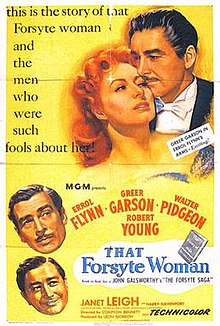The Forsyte Saga, first published under that title in 1922, is a series of three novels and two interludes published between 1906 and 1921 by the English author John Galsworthy, who won the 1932 Nobel Prize in Literature. They chronicle the vicissitudes of the leading members of a large upper-middle-class English family that is similar to Galsworthy's. Only a few generations removed from their farmer ancestors, its members are keenly aware of their status as "new money". The main character, the solicitor and connoisseur Soames Forsyte, sees himself as a "man of property" by virtue of his ability to accumulate material possessions, but that does not succeed in bringing him pleasure.

Eileen Evelyn Greer Garson was a British-American actress and singer. She was a major star at Metro-Goldwyn-Mayer who became popular during the Second World War for her portrayal of strong women on the homefront; listed by the Motion Picture Herald as one of America's top-10 box office draws from 1942 to 1946.

Walter Davis Pidgeon was a Canadian-American actor. He earned two Academy Award for Best Actor nominations for his roles in Mrs. Miniver (1942) and Madame Curie (1943). Pidgeon also starred in many notable films such as How Green Was My Valley (1941), The Bad and the Beautiful (1952), Forbidden Planet (1956), Executive Suite (1954), Voyage to the Bottom of the Sea (1961), Advise & Consent (1962), Funny Girl (1968), and Harry in Your Pocket (1973).

Robert George Young was an American film, television, and radio actor best known for his leading roles as Jim Anderson, the father character, in Father Knows Best and the physician Marcus Welby in Marcus Welby, M.D. (ABC). In 1978, Young produced a documentary that "stressed the importance of motorcycle training for teenagers." This film earned him the 1979 BAFTA Award for Best Specialised Film.

Young Bess is a 1953 Technicolor biographical film made by Metro-Goldwyn-Mayer about the early life of Elizabeth I, from her turbulent childhood to the eve of her accession to the throne of England. It stars Jean Simmons as Elizabeth and Stewart Granger as Thomas Seymour, with Charles Laughton as Elizabeth's father, Henry VIII, a part he had played 20 years before in The Private Life of Henry VIII. The film was directed by George Sidney and produced by Sidney Franklin, from a screenplay by Jan Lustig and Arthur Wimperis based on the novel of the same title by Margaret Irwin (1944).

Kim is a 1950 adventure film made in Technicolor by Metro-Goldwyn-Mayer. It was directed by Victor Saville and produced by Leon Gordon from a screenplay by Helen Deutsch, Leon Gordon and Richard Schayer, based on the classic 1901 novel of the same name by Rudyard Kipling.

King Solomon's Mines is a 1950 Technicolor adventure film, and the second film adaptation of the 1885 novel of the same name by Henry Rider Haggard. It stars Deborah Kerr, Stewart Granger and Richard Carlson. It was adapted by Helen Deutsch, directed by Compton Bennett and Andrew Marton and released by Metro-Goldwyn-Mayer.
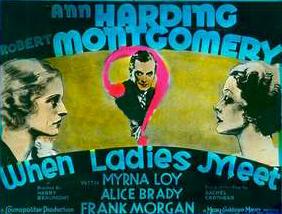
When Ladies Meet is a 1933 American pre-Code comedy film directed by Harry Beaumont and starring Ann Harding, Myrna Loy, Robert Montgomery, Alice Brady, and Frank Morgan. The film is the first adaptation of the 1932 Rachel Crothers play of the same name. It was nominated for an Academy Award for Best Art Direction by Cedric Gibbons.

When Ladies Meet is a 1941 Metro-Goldwyn-Mayer American romantic comedy film starring Joan Crawford, Robert Taylor, Greer Garson, Herbert Marshall and Spring Byington. The screenplay by S.K. Lauren and Anita Loos was based upon a 1932 play by Rachel Crothers. The film was directed by Robert Z. Leonard, who also coproduced along with Orville O. Dull. The film was a remake of the 1933 pre-Code film of the same name, which had starred Ann Harding, Myrna Loy, Robert Montgomery and Frank Morgan in the roles played by Garson, Crawford, Taylor and Marshall.

The film appearances of movie actor Errol Flynn (1909–1959) are listed here, including his short films and one unfinished feature.
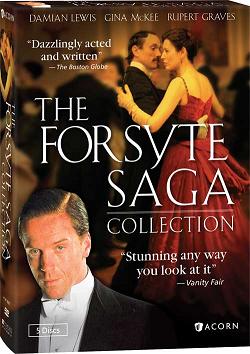
The Forsyte Saga is a British drama television serial that chronicles the lives of three generations of an upper-middle-class family from the 1870s to 1920s. It was based on the books of John Galsworthy's trilogy The Forsyte Saga, which were adapted by Granada Television for the ITV network in 2002 and 2003. Additional funding was provided by American PBS station WGBH, as the 1967 BBC version had been a success on PBS in the early 1970s.

Julia Misbehaves is a 1948 American romantic comedy film starring Greer Garson and Walter Pidgeon as a married couple who are separated by the man's snobbish family. They meet again many years later, when the daughter whom the man has raised, played by Elizabeth Taylor, invites her mother to her wedding. The film also features Peter Lawford and Cesar Romero.
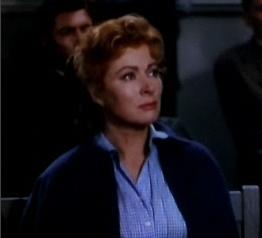
Scandal at Scourie is a 1953 American drama Technicolor film directed by Jean Negulesco, starring Greer Garson, Walter Pidgeon "above the title", and co-starring Donna Corcoran. Garson and Pidgeon were together for the 8th and last time in this movie, which was filmed on location in Canada.

Never Say Goodbye is a 1946 American romantic comedy film directed by James V. Kern and starring Errol Flynn, Eleanor Parker and Lucile Watson. Produced and distributed by Warner Brothers, it is about a divorced couple and the daughter who works to bring them back together. It was Errol Flynn's first purely comedic role since Footsteps in the Dark.

The Forsyte Saga is a 1967 BBC television adaptation of John Galsworthy's series of The Forsyte Saga novels, and its sequel trilogy A Modern Comedy. The series follows the fortunes of the upper middle class Forsyte family, and stars Eric Porter as Soames, Kenneth More as Young Jolyon and Nyree Dawn Porter as Irene.

Lydia Bailey is a 1952 American historical adventure film directed by Jean Negulesco and starring Dale Robertson, Anne Francis and Charles Korvin. It was made by 20th Century Fox and based on the 1947 novel of the same name by Kenneth Roberts.

Adventures of Captain Fabian or Adventure in New Orleans is a 1951 American adventure film directed by William Marshall and starring Errol Flynn, Micheline Presle, Vincent Price, Agnes Moorehead and Victor Francen.
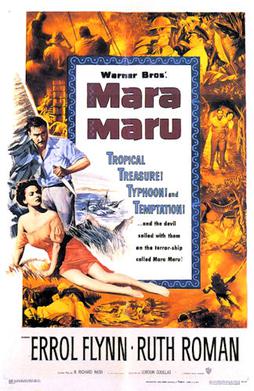
Mara Maru is a 1952 American noir action film starring Errol Flynn, Ruth Roman and Raymond Burr. Directed by Gordon Douglas, it was the last movie Flynn made for Warner Bros where he had started out in Hollywood in 1935.

Montana is a 1950 American Western film directed by Ray Enright and starring Errol Flynn. It was only the second time Flynn played an Australian on screen, the first time being Desperate Journey (1942).

Last of the Buccaneers is a 1950 American Technicolor adventure film directed by Lew Landers and starring Paul Henreid as Jean Lafitte.
